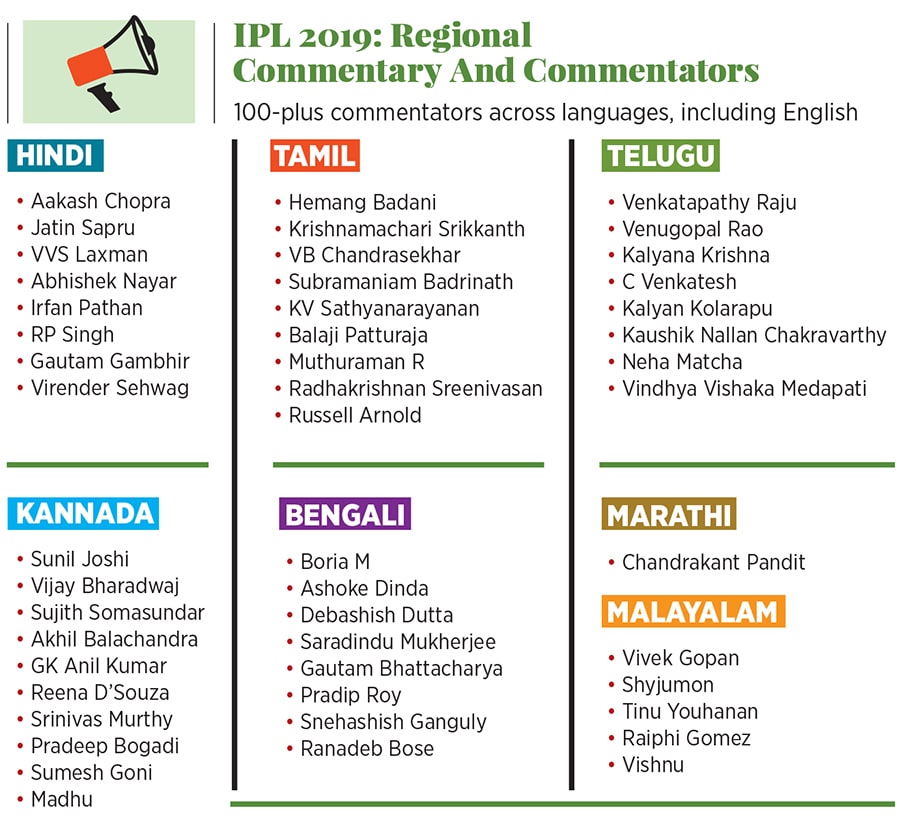
How Star Sports has taken the Indian Premier League deep into the hinterland
With live broadcast and commentary in seven regional languages, IPL viewership for women, men and children grew over the last year by 15 percent, 13 percent and 29 percent respectively
 The concept of Fan Parks across the country and regional commentary have taken IPL to the remotest parts of the country
The concept of Fan Parks across the country and regional commentary have taken IPL to the remotest parts of the countryImage: BCCI
When West Indian fast bowler Andy Roberts was trapped leg before wicket by Indian skipper Kapil Dev on June 25, 1983, Kumar (who goes only by his first name) knew he was witnessing history. It was the ninth West Indian wicket to fall and India needed just one more scalp to register an improbable and maiden cricket World Cup win. Suddenly, the television went on the blink. “Doordarshan lost its signal from London,” recalls Kumar, who was then 20 years old. The farmer watched the finals at his friend’s house in Madavoorpara, a sleepy hamlet, roughly 10 km from Kerala’s capital, Thiruvananthapuram.

“The commentary was not in Malayalam,” rues Kumar. “I could only see the game. Hindi and English still remain alien languages... Kapil was God,” gushes Kumar in his mother tongue.
Fast forward to April 2019. A lot has changed in God’s Own Country. Kumar, now 56 and with a new God in Virat Kohli, is glued to his TV set in his tiny home. His wife Usha Kumar, 48, is watching the Indian Premier League (IPL) for the first time, along with their son and daughter-in-law. An IPL promo starts on Star Sports. A bunch of young children, dressed in bright coloured T-shirts of different teams, are busy forming two teams. “Captains, team undaakkoo (Captains, form the team),” one of them shouts. The process begins, as each of them—named after their favourite cricketer—joins one of the teams. A boy, donning the jersey of Royal Challengers Bangalore, refuses to be called Kohli. “Enikyu Murgesh Sathyamurthy aavanam (I will be Murgesh Sathyamurthy),” he says while introducing himself. Suddenly, Kohli enters the scene and starts talking in Malayalam. Kumar, on the edge of a rickety wooden chair, exults like a child. “Game unndakkum name (The game will make your name).” His family bursts into laughter.
Though the promo is dubbed in Malayalam—Omkar Patwardhan was the name of the child who refuses to play Kohli in the original Hindi commercial—Kumar watches the IPL with Malayalam commentary every Sunday. “Earlier I could only see the game. Now I can feel it,” he smiles.

In a first, the IPL is being beamed live with Malayalam commentary over weekends. Star India, which bought the IPL broadcast rights for five years starting 2018 for a staggering ₹16,347 crore, is also experimenting with Marathi commentary for the first time. Kumar, for his part, enjoys commentary by Tinu Youhanan, the first player from Kerala to play for India. “He is the son of the soil.”
Of The People...
Meanwhile, at Urmi Estate in Lower Parel, Mumbai, the corporate headquarters of Star, Gautam Thakar, chief executive officer of Star Sports, is elated. Star’s gambit to take IPL deeper into the hinterland with regional commentary in seven languages seems to have paid off. Total viewership during the first four weeks of the six-week T20 extravaganza stood at 411 million; total viewership last season was 414 million. Growth in viewership in women, men and children over the last year stood at 15 percent, 13 percent and 29 percent, respectively.
(This story appears in the 30 November, -0001 issue of Forbes India. To visit our Archives, click here.)



 Gautam Thakar, chief executive officer of Star Sports
Gautam Thakar, chief executive officer of Star Sports






